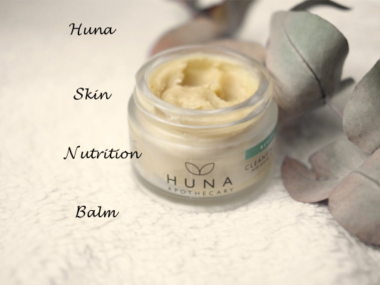For those who are dealing with hair thinning or loss, hair toppers are a great solution. While ready-made hair toppers are widely available, Making your own is an enjoyable and economical choice. We will walk you through the step-by-step process of how to make a hair topper at home in this comprehensive article. Whether you’re a beginner or a seasoned enthusiast, this course will provide you with the knowledge and abilities you need to create a customized hair topper that perfectly matches your hair type, color, and style.
How to Make a Hair Topper
Gathering Materials
You will require the following supplies before you can begin:
- Hair wefts or loose hair: Choose high-quality human or synthetic hair that matches your hair texture and color.
- A wig cap or a suitable base material: You can use a wig cap, fine mesh fabric, or a piece of lace as the foundation for your hair topper.
- Sewing supplies: Thread, needle, pins, and scissors.
- Clips or combs: These will help secure the hair topper in place.
- Adhesive or tape (optional): If desired, you can use adhesive or tape to attach the hair topper to your natural hair.
Measuring and Designing
Before you start constructing your hair topper, you need to measure the area of your head where the topper will be placed. Measure the intended covered area’s width and length using a flexible measuring tape. Once you have the measurements, transfer them to the wig cap or base material, ensuring it fits comfortably and securely.
Next, design the style of your hair topper. Consider the hair length, density, and parting area. You can opt for a full or partial coverage topper, depending on your needs. Use pins or a marker to outline the desired shape and ensure symmetry.
Constructing the Hair Topper
- Cut the base material: Carefully cut the wig cap or base material following the marked shape. Be precise to achieve a seamless finish.
- Sew the clips or combs: Attach the clips or combs to the underside of the base material. Space them evenly to ensure stability and security when wearing this product.
- Prepare the wefts or loose hair: If using hair wefts, measure and cut them to match the length and width of the base material. If using loose hair, divide it into sections for easier handling.
- Sew the hair onto the base: Starting from the back, use a needle and thread to sew the hair wefts or loose hair onto the base material. Begin at the bottom and work your way up, ensuring the hair is securely attached. If using multiple wefts, layer them for a natural appearance. Pay attention to the hairline, parting area, and desired volume.
- Trim and style: Once the hair is securely attached, carefully trim any excess length to achieve your desired hairstyle. Style the hair topper as desired, using heat styling tools or products specifically formulated for synthetic hair.
Attaching and Maintaining the Hair Topper
To attach the hair topper, position it on your head and use the clips or combs to secure it to your natural hair. If desired, you can also use adhesive or tape for additional hold. Ensure the topper is aligned with your natural hairline and feels comfortable.
Maintaining your hair topper is crucial for its longevity. Clean it regularly, following the manufacturer’s instructions for human or synthetic hair. Brush or comb the hair gently, starting from the ends and working your way up. Store the topper on a mannequin head or a wig stand to maintain its shape when not in use.
Benefits of Using a Hair Topper
1. Instant Hair Transformation
One of the most significant benefits of using a hair topper is its ability to provide an instant hair transformation. Whether you’re dealing with thinning or partial hair loss, a hair topper can seamlessly blend with your natural hair, creating the appearance of fullness and volume. With the right color, texture, and style, you can achieve a natural and undetectable look, boosting your confidence and self-image.
2. Versatility in Hairstyling
Hair toppers offer unparalleled versatility when it comes to hair styling. They can be altered to the length you choose, color, and texture, allowing you to experiment with various hairstyles without any commitment. Whether you prefer straight, wavy, or curly, a hair topper can effortlessly adapt to your desired look. You can also try different partings, updos, and braided styles, giving you the freedom to express your creativity and change your hairstyle to suit any occasion.
3. Non-Invasive Solution
Unlike other hair restoration methods, such as surgical procedures or extensions, hair toppers provide a non-invasive solution to hair loss concerns. There is no need for any surgical intervention, chemicals, or bonding agents that may damage your existing hair. To provide comfort throughout the day, hair toppers are made to be light and breathable. They are simple to attach and remove without damaging your natural hair, making them a safe and reversible option for individuals seeking to enhance their hair’s appearance.
4. Cost-Effective Alternative
Purchasing a product can be a cost-effective alternative compared to more permanent hair restoration solutions. The cost of hair transplants and other surgical treatments can vary requiring multiple sessions and maintenance. On the other hand, a well-crafted hair topper can provide a natural-looking result at a fraction of the cost. Additionally, with proper care and maintenance, a hair topper can have a prolonged lifespan, allowing you to enjoy its benefits for an extended period without incurring additional expenses.
5. Confidence Boost
Perhaps the most invaluable benefit of using a hair topper is the boost in confidence and self-esteem it provides. Hair loss can significantly impact a person’s self-image, leading to feelings of insecurity. By restoring the appearance of a full head of hair, a hair topper helps individuals regain their confidence and feel more comfortable in social and professional settings. The improved self-assurance radiates into various aspects of life, enhancing overall well-being and quality of life.
Conclusion
You can recover your confidence and develop a unique answer for your particular demands by creating this product. By following the steps outlined in this guide, you’ll be able to make a hair topper that perfectly matches your hair type, color, and style. Remember to experiment and adapt the process to your preferences, and enjoy the satisfaction of wearing a hair topper that you’ve crafted with your own hands. Get ready to embrace a renewed sense of self-assurance and style!






